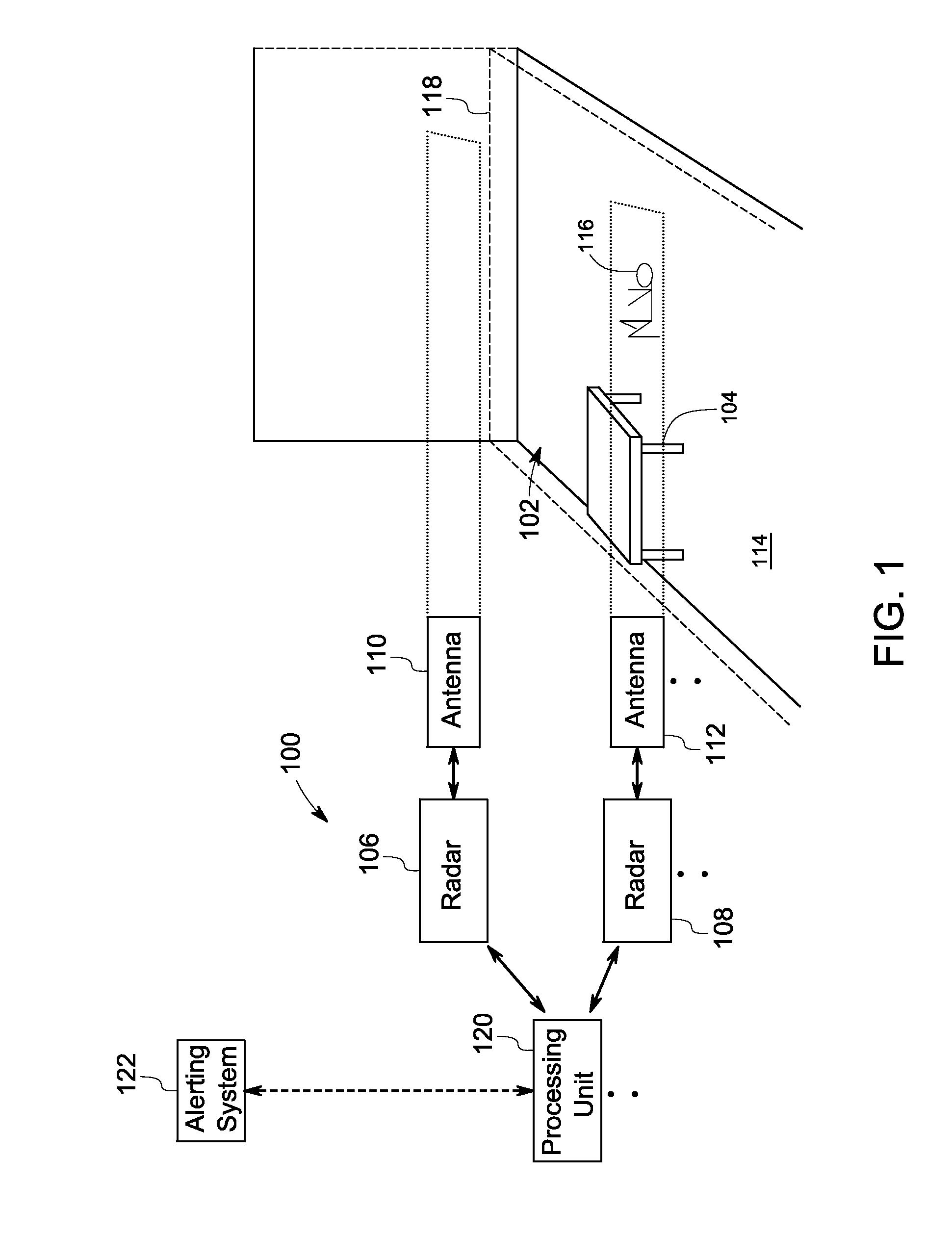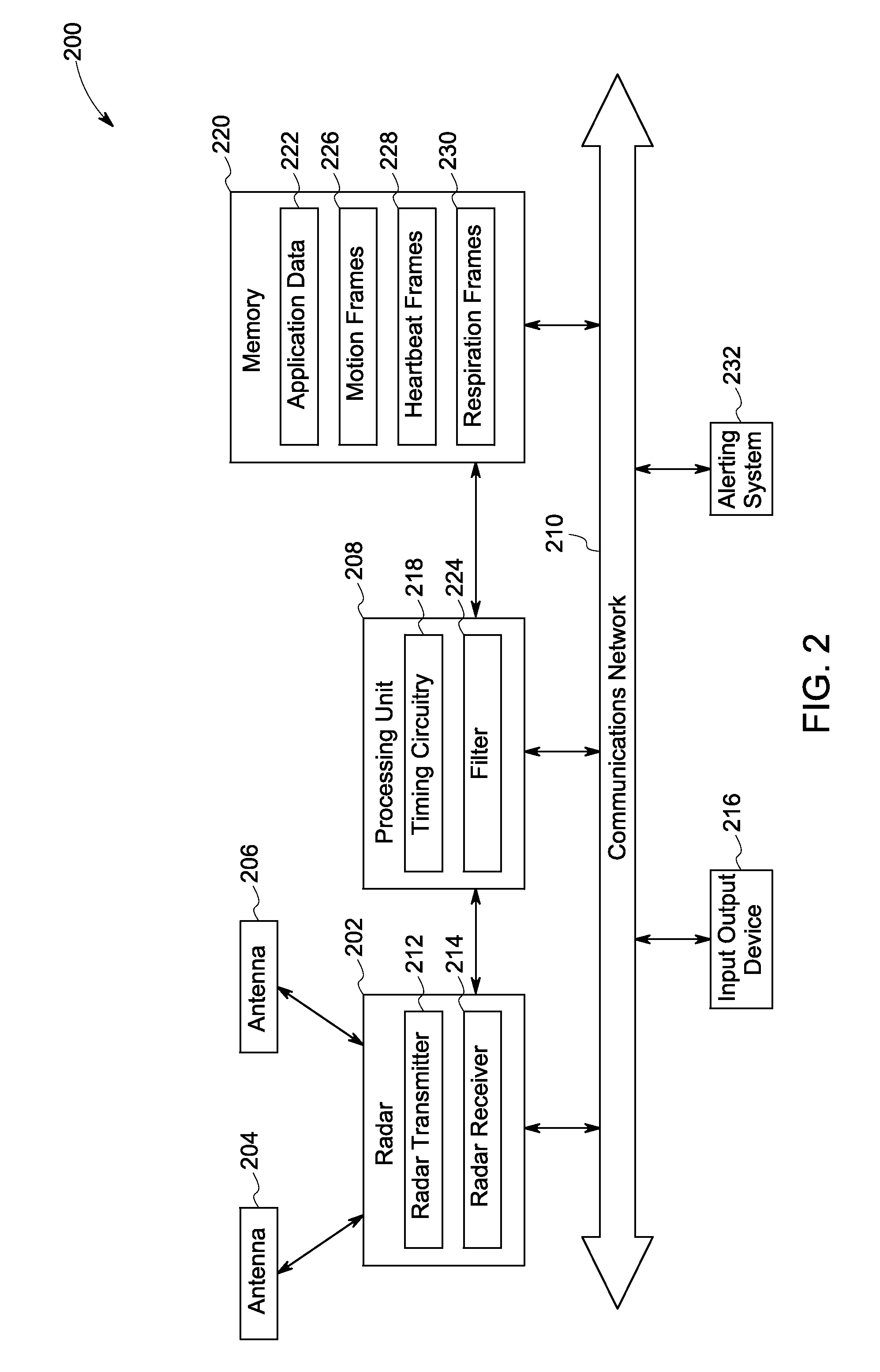Radar based systems and methods for detecting a fallen person
a technology of radar and fall detection, applied in the field of health monitoring, can solve the problems of high mortality rate of people who remain on the ground, serious injuries, unintentional falls,
- Summary
- Abstract
- Description
- Claims
- Application Information
AI Technical Summary
Benefits of technology
Problems solved by technology
Method used
Image
Examples
Embodiment Construction
[0018]The following description presents systems and methods for monitoring a subject such as a person in a desired space. Particularly, certain embodiments illustrated herein describe inexpensive yet efficient systems and methods for detecting a fallen person using one or more range-controlled RADAR (Radio Detection and Ranging) systems. As used herein, the term “range-controlled” RADAR refers to a radar that limits an associated transmit interval and / or a receive interval in order to process only those signals that are received by a corresponding antenna from a designated radial range. Although the present systems describe use of range-controlled RADAR circuitry, the systems may include any other suitable type of motion sensing devices, such as electromagnetic, acoustic or optical measurement devices, for use in different operating environments for detecting a fallen person. An exemplary environment that is suitable for practicing various implementations of the present systems and...
PUM
 Login to View More
Login to View More Abstract
Description
Claims
Application Information
 Login to View More
Login to View More - R&D
- Intellectual Property
- Life Sciences
- Materials
- Tech Scout
- Unparalleled Data Quality
- Higher Quality Content
- 60% Fewer Hallucinations
Browse by: Latest US Patents, China's latest patents, Technical Efficacy Thesaurus, Application Domain, Technology Topic, Popular Technical Reports.
© 2025 PatSnap. All rights reserved.Legal|Privacy policy|Modern Slavery Act Transparency Statement|Sitemap|About US| Contact US: help@patsnap.com



